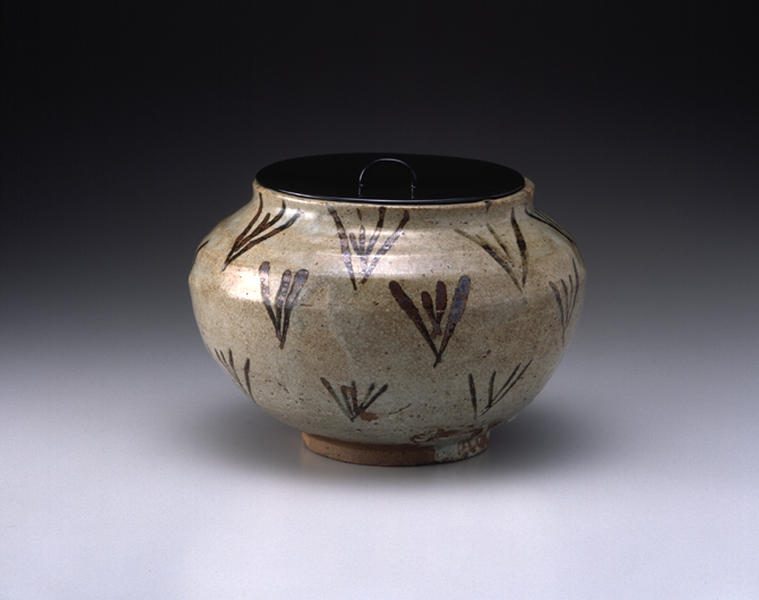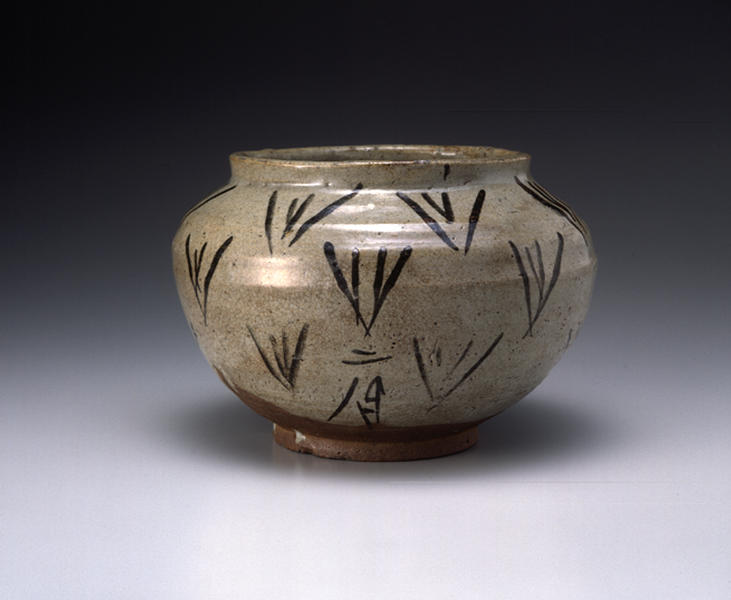Fresh Water Jar
- Karatsu kiln, Saga pref.
- Momoyama to Edo period
- 17th century
- Karatsu ware, E-garatsu type
- H-13.4 D-20
Catalogue Entry
Karatsu ware has been produced in the region formerly called Hizen, consisting of present-day Nagasaki Prefecture and the western part of Saga Prefecture. Hizen kilns started their operation in the Tensho period (1573-1592), but a great development did not occur until Toyotomi Hideyoshi's troops invaded Korea in 1592 and 1597, and Korean potters were forcibly brought to Japan. Outstanding Momoyama period (1573-1615) works are mostly ceramics used for the tea ceremony, and along with Ido, Raku, and Hagi, Karatsu tea bowls have been highly valued among masters of tea from the beginning. Karatsu jars, too, which inherited the traditional simplicity of the Korean dynasty era, have long been highly treasured. From the shared technology of climbing kilns and the design similarity of their products, we learn that Karatsu and Mino interacted with one another. While this type of pot was produced in large quantities in Karatsu, its counterpart is conspicuously absent in Mino. Having a wide opening and a pronounced shoulder near the top, this jar is a good example of this type of Karatsu ware. Over three parts of the surface of the pot, there are distinctive patterns which resemble grass blades or flower petals. On the back side, two Chinese characters, 二月 meaning "the second month" (early spring) are inscribed. The glaze on this container turned out to be a little bluish, and the firing made the vessel hard. This piece, endowed with the perfect charm of patterned Karatsu (E-garatsu) ware, was diverted to be used as a water jar and is known as "Juji Mushimochi."

